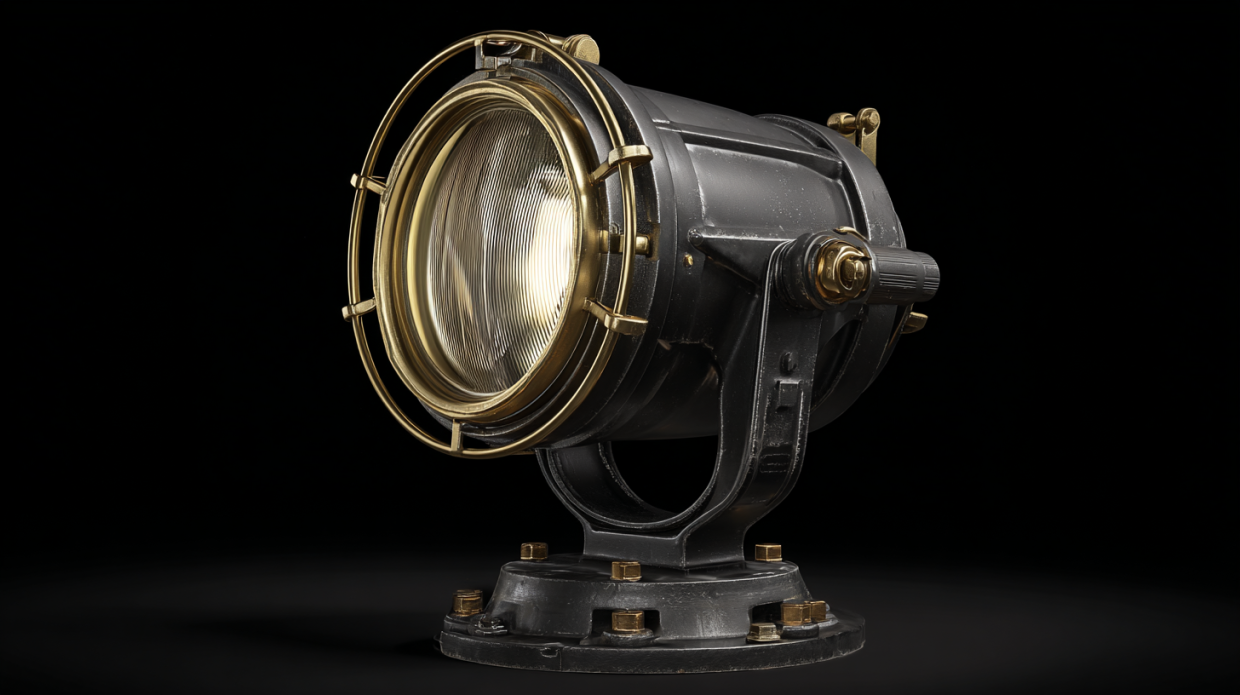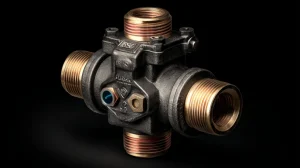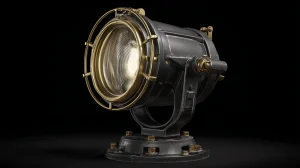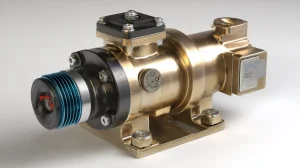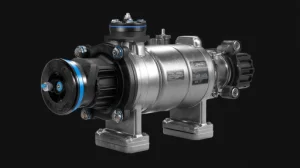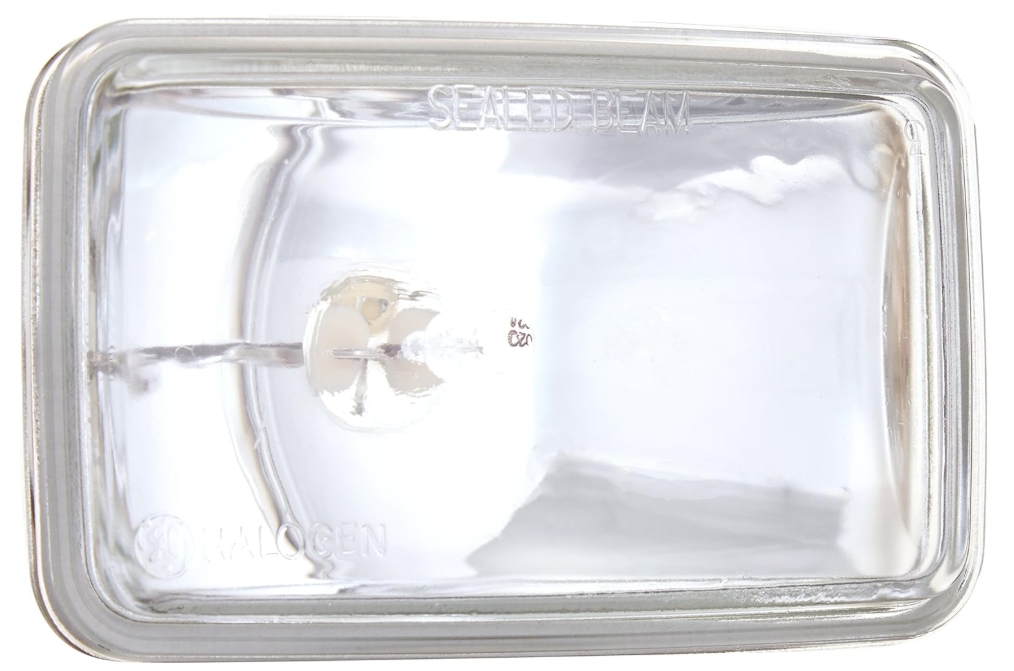
Jabsco Replacement Sealed Beam f/135SL Searchlight
- Amps – Draw NONE; Voltage – Input Range (Volts) NONE; Waterproof NONE; Wireless NONE
- Bulb Type NONE
- Bulb Watts 50 Watt
- Candela NONE
Navigating the Darkness with Marine-Grade Precision
The evening was closing in fast. Dark clouds loomed overhead as I guided my boat back toward the marina. What had started as a perfect day on the water was quickly turning treacherous. Then, with one simple touch of a button, everything changed. A powerful beam cut through the gathering gloom, illuminating the channel markers ahead with crystal clarity. My Jabsco searchlight had once again proven itself not just an accessory, but an essential safety tool that every serious boater should consider.
If you’ve ever found yourself navigating unfamiliar waters after sunset or searching for a mooring in the dark, you understand the critical importance of reliable illumination. Today, I’m diving deep into the world of Jabsco searchlights, those powerful beacons that have become indispensable companions for countless mariners around the globe.
What Exactly Is a Jabsco Searchlight?
At its core, a Jabsco searchlight is a high-intensity illumination device specifically engineered for marine environments. These aren’t your average flashlights or basic spotlights—they’re precision instruments designed to withstand the harsh conditions encountered on the water while providing exceptional visibility when you need it most.
Manufactured by Jabsco, a division of Xylem Inc. that has been creating marine products since 1939, these searchlights represent decades of engineering expertise focused on the unique needs of boaters. What separates Jabsco from generic alternatives is their unwavering commitment to quality construction and marine-specific design considerations.
The typical Jabsco searchlight features a robust housing (usually constructed from corrosion-resistant materials like chrome-plated brass or high-grade polymers), powerful bulb technology, and control mechanisms designed for intuitive operation even in challenging conditions. These lights aren’t merely bright—they’re built to deliver focused illumination exactly where you need it, when you need it.
The Science Behind the Light: How Jabsco Searchlights Work
Understanding how these marine marvels operate helps appreciate their value. At the heart of every Jabsco searchlight is a carefully engineered illumination system that transforms electrical energy into powerful, directed light.
The process begins with the power source, typically your boat’s 12V or 24V DC electrical system. This power feeds into the searchlight’s internal components, where the magic happens. The electrical current powers a high-intensity bulb—usually halogen or LED technology—which produces significantly more lumens than standard lighting fixtures. This light is then captured and focused by a precisely engineered reflector that directs the beam forward with minimal scatter.
What makes Jabsco’s approach particularly effective is their attention to the reflector design. Rather than simply creating brightness, their reflectors are shaped to optimize the beam pattern, creating a focused central spot for distance viewing while maintaining enough peripheral illumination to provide context. This balance between spotlight and floodlight characteristics makes them remarkably versatile.
The control mechanisms are equally sophisticated. Depending on the model, your Jabsco searchlight might be operated via:
- Direct manual control (hand-operated)
- Dash-mounted joystick control
- Remote control systems
- Integrated control panels with memory functions
The more advanced models incorporate motors that allow for full 360-degree horizontal rotation and significant vertical adjustment, all controlled from the comfort of your helm station. This means you can sweep the shoreline, inspect channel markers, or scan for obstacles without leaving your position at the controls.
Distinctive Features That Set Jabsco Searchlights Apart
What makes these illumination tools worthy of their reputation? Let’s explore the key features that have made Jabsco a trusted name among serious boaters:
Durability in Marine Environments
Perhaps the most crucial feature is their exceptional durability. Marine environments combine multiple threats: saltwater corrosion, UV degradation, physical impacts, and extreme temperature variations. Jabsco searchlights are engineered with these challenges in mind, featuring:
- Corrosion-resistant materials (marine-grade stainless steel, chrome-plated brass, and specialized polymers)
- Sealed housings with watertight integrity
- UV-resistant finishes that prevent degradation in constant sun exposure
- Shock-absorbing mounts that protect internal components from vibration
I’ve personally witnessed lesser lights fail after just one season in saltwater environments, while my Jabsco continues performing flawlessly year after year.
Illumination Performance
The primary purpose of any searchlight is to provide visibility, and here Jabsco truly excels. Their lights typically offer:
- Exceptional beam distance (ranging from 1/2 mile to over a mile depending on model)
- Balanced beam patterns that provide both distance and width
- Consistent light quality without “hot spots” or uneven illumination
- Color temperature optimized for visibility in various conditions
When you’re trying to identify a navigation marker in fog or locate a floating hazard at night, this kind of performance isn’t just convenient—it’s potentially lifesaving.
Control Systems and Usability
Jabsco recognizes that even the most powerful light is worthless if you can’t direct it where needed. Their control systems are engineered for intuitive operation, featuring:
- Responsive and precise directional control
- Ergonomic joystick designs that feel natural even in rough conditions
- Backlit controls for nighttime operation
- Memory functions that can recall frequently used positions
- Speed controls that allow both quick sweeps and precise adjustments
On my own boat, the ability to control the searchlight without taking my attention away from navigation has proven invaluable countless times.
Installation Flexibility
Recognizing the diverse nature of marine vessels, Jabsco offers installation options to accommodate various boat designs:
- Deck-mounted models for maximum visibility
- Rail-mounted options for smaller vessels
- Concealed installations that preserve clean lines
- Retrofit kits that allow upgrades to existing systems
This adaptability means there’s likely a Jabsco solution regardless of your vessel’s size or configuration.
Installation: Bringing Jabsco Illumination to Your Vessel
Installing a Jabsco searchlight represents a significant upgrade to your boat’s capabilities, but the process requires careful planning and execution. While professional installation is always an option (and recommended for complex systems), many boaters successfully handle this project themselves.
The installation process typically follows these steps:
1. Planning and Preparation
Begin by determining the optimal mounting location. Consider factors like:
- Visibility from the helm
- Unobstructed rotation range
- Structural support for the unit’s weight
- Protection from unnecessary impacts
- Access for maintenance
- Wire routing possibilities
Take time with this step—a poorly positioned searchlight can create operational limitations that no amount of quality can overcome.
2. Mounting Hardware Installation
Once you’ve selected the location, the mounting process begins:
- For deck mounts, you’ll need to drill precisely positioned holes using the template provided
- Apply appropriate marine sealant to prevent water ingress
- Secure the mounting base with high-quality marine-grade fasteners
- Ensure the mount is level and properly aligned
Remember that this installation will need to withstand significant forces when operating at speed in rough conditions, so attention to detail here pays dividends.
3. Electrical Connection
The electrical installation is critical for both performance and safety:
- Route marine-grade wiring through appropriate channels, avoiding sharp edges
- Use properly sized wire for the current demands and distance
- Install appropriate circuit protection (fuses or breakers)
- Make waterproof connections using heat-shrink terminals
- Secure wiring to prevent vibration damage
- Connect to appropriate power sources (typically direct to battery with fuse protection)
For remote-controlled models, additional wiring for the control systems will be required, often including specialized cables for the control signals.
4. Control System Installation
For models with remote capabilities:
- Mount the control joystick or panel in an accessible location at the helm
- Ensure control wiring is routed separately from high-current power wires
- Follow manufacturer instructions for control system calibration
- Test all functions thoroughly before final securing of components
5. Testing and Adjustments
Once installed, comprehensive testing should include:
- Full range of motion testing
- Speed control verification
- Weather seal inspection
- Vibration testing at various operating speeds
- Night operation to confirm beam pattern and effectiveness
I vividly remember completing my own installation and conducting the first night test—the transformation in nighttime visibility was nothing short of remarkable. What had previously been tense, uncertain navigation became confident and precise.
The Practical Benefits: Why Boaters Invest in Jabsco Searchlights
The decision to install a Jabsco searchlight typically stems from practical needs rather than aesthetics. These powerful illumination tools deliver tangible benefits that justify their investment:
Enhanced Navigation Safety
The primary benefit is dramatically improved visibility for navigation. A quality searchlight transforms nighttime boating from a nerve-wracking experience into a manageable, even enjoyable activity. Specific safety advantages include:
- Ability to identify navigation markers at significant distances
- Detection of floating hazards like logs, debris, or unlighted vessels
- Illumination of shorelines, channel boundaries, and dock approaches
- Assistance in fog or reduced visibility conditions
- Emergency signaling capabilities
Many experienced boaters consider a quality searchlight as essential as navigation lights for serious nighttime operation.
Docking and Mooring Assistance
Even seasoned captains appreciate extra visibility when approaching unfamiliar docks or mooring fields:
- Illumination of dock structures before commitment to approach
- Ability to identify available slips or mooring balls
- Visualization of potential obstacles or hazards
- Assistance for crew members handling lines in darkness
- Reduced stress during challenging docking conditions
The confidence provided by clear visibility can transform an anxious docking experience into a smooth, controlled process.
Emergency Preparedness
In emergency situations, a powerful searchlight becomes an invaluable tool:
- Person-overboard searches
- Vessel-to-vessel assistance
- Signaling for help (SOS patterns)
- Illumination for emergency repairs
- Navigation during electrical system failures (for models with independent power options)
These capabilities aren’t merely convenient—they represent genuine safety equipment that could prove critical in emergency scenarios.
Extended Boating Hours
With reliable illumination, your boating day needn’t end at sunset:
- Confidence for returning to harbor after evening activities
- Ability to depart before dawn for early fishing or longer cruising days
- Night fishing capabilities
- Evening wildlife observation
- Enjoyment of nighttime scenery and astronomical events
This extension of usable boating hours represents significant added value from your vessel investment.
Multi-Purpose Utility
Beyond navigation, quality searchlights serve numerous auxiliary functions:
- Illumination for exterior boat maintenance in low light
- Security lighting when moored in unfamiliar locations
- Assistance during anchoring procedures
- Visual communication with other vessels
- Spotlighting for photography or wildlife observation
This versatility transforms a searchlight from a single-purpose tool into an essential piece of marine equipment.
Troubleshooting Common Jabsco Searchlight Issues
Even the finest marine equipment occasionally requires attention. Understanding common issues and their solutions helps maintain optimal performance:
Diminished Light Output
If your searchlight seems less bright than usual, consider these potential causes:
- Bulb aging (halogen bulbs gradually dim throughout their lifespan)
- Lens fogging or salt accumulation
- Corrosion on electrical connections reducing power
- Voltage drop from undersized wiring or failing connections
- Reflector degradation from heat or environmental factors
Solutions typically involve cleaning optical surfaces, checking connections, measuring voltage at the light, and potentially replacing the bulb assembly.
Erratic Movement or Positioning
For remote-controlled models, movement issues might stem from:
- Control system calibration drift
- Worn gears or drive mechanisms
- Corrosion in motor components
- Obstructions in the rotation path
- Damaged wiring to motors or position sensors
Regular lubrication of moving parts, protection from impact, and periodic control system recalibration help prevent these issues.
Complete Failure to Operate
If your searchlight won’t function at all, investigate:
- Circuit protection (blown fuses or tripped breakers)
- Power supply connections
- Control system functionality
- Internal wiring integrity
- Water intrusion damage
Starting with the simplest possibilities (checking fuses and connections) before progressing to more complex diagnostics often resolves issues efficiently.
Moisture Intrusion
Water entry can cause significant damage, indicated by:
- Fogging inside the lens assembly
- Corrosion on internal components
- Electrical shorts or erratic behavior
- Discoloration of reflector surfaces
Prevention through proper maintenance of seals and gaskets is far easier than repair after water damage occurs.
Operation Mastery: Getting the Most from Your Jabsco Searchlight
Like any sophisticated marine equipment, Jabsco searchlights reward operational knowledge with optimal performance:
Basic Operation Principles
The fundamental operation varies by model, but typically involves:
- Power activation through dedicated switches
- Directional control via joystick, buttons, or manual positioning
- Intensity controls (where available)
- Special function activation (SOS, strobe, etc.)
Familiarize yourself with your specific model’s controls before you need them in challenging conditions.
Optimal Usage Techniques
Experienced operators develop techniques that maximize effectiveness:
- Short, directed bursts rather than continuous operation to preserve night vision
- Sweeping patterns for searching large areas
- Strategic illumination of navigation points rather than continuous use
- Coordination with radar and chart plotters for targeted illumination
- Communication protocols when using powerful lights near other vessels
I’ve learned to use brief, targeted illumination rather than constant operation—this preserves my night vision while still providing the critical information needed.
Night Vision Considerations
Powerful lights affect your eyes’ adaptation to darkness. Consider:
- Using red lighting at the helm to maintain night vision
- Avoiding looking directly at the illuminated area when possible
- Allowing time for readaptation after using the searchlight
- Using minimum necessary brightness for the task
- Closing one eye when using the light to preserve some night adaptation
These techniques help balance the benefits of powerful illumination with the need to maintain your natural night vision capabilities.
Exploring the Jabsco Searchlight Lineup
Jabsco offers several distinct product lines to meet various boating needs:
Remote-Controlled Models
The flagship offerings feature full remote directional control:
- 135SL Series: Offering 100,000 candlepower with 360° horizontal and 75° vertical movement
- 255SL Series: Providing 200,000 candlepower with similar movement range
- RC Series: Compact remote-controlled options for smaller vessels
These models represent the premium end of the spectrum, offering maximum convenience and capability.
Manual Control Searchlights
For boaters preferring simplicity or working with budget constraints:
- 60080 Series: Hand-operated with fixed mounting
- 60020 Series: Portable options with mounting brackets
- 61050 Series: Compact models for smaller vessels
These units deliver the same quality construction and illumination performance without the complexity of remote systems.
Specialty Models
For specific applications:
- Heavy-duty commercial models for professional maritime use
- Dual-bulb systems for redundancy in critical applications
- LED technology options for extended lifespan and reduced power consumption
- Integrated camera models that combine illumination with video capabilities
The diversity of offerings ensures there’s an appropriate Jabsco solution regardless of vessel size or operational requirements.
Acquisition Considerations: Purchasing Your Jabsco Searchlight
When you’re ready to invest in a Jabsco searchlight, several factors should guide your decision-making process:
Where to Purchase
Jabsco searchlights are available through various channels:
- Marine specialty retailers with physical locations
- Online marine equipment suppliers
- Boat dealerships and service centers
- Direct from manufacturer in some regions
- Marine equipment shows and expositions
Purchasing from authorized dealers ensures you receive genuine products with full warranty protection—an important consideration for marine equipment.
Price Expectations
Jabsco searchlights represent a premium product category, with pricing reflecting their quality and capabilities:
- Entry-level manual models typically range from $150-$300
- Mid-range remote-controlled units generally fall between $400-$800
- Premium models with advanced features can exceed $1,000
- Installation costs (if professionally done) may add $200-$500 depending on complexity
While these numbers represent significant investments, experienced boaters generally consider quality lighting to be essential safety equipment rather than an optional accessory.
Selection Criteria
When choosing between models, consider:
- Your vessel’s size and typical operating environment
- Power system capacity and electrical infrastructure
- Mounting location possibilities
- Primary intended uses (navigation, docking, emergency, etc.)
- Budget constraints
- Installation capabilities (DIY vs. professional)
- Control system preferences
- Integration with existing electronics
The ideal balance of these factors varies dramatically between a weekend lake sailor and a long-range offshore cruiser.
Maintenance for Longevity: Keeping Your Searchlight in Prime Condition
Like all marine equipment, Jabsco searchlights benefit from regular maintenance to ensure reliable operation and extended lifespan:
Routine Maintenance Tasks
Incorporate these actions into your regular boat maintenance schedule:
- External cleaning: Wash the exterior housing with fresh water after each saltwater exposure
- Lens care: Clean the lens with appropriate non-abrasive cleaners
- Connection inspection: Periodically check electrical connections for corrosion
- Movement testing: Exercise full range of motion regularly to prevent seizing
- Mounting security: Verify all mounting hardware remains tight and corrosion-free
- Seal inspection: Check gaskets and seals for integrity
- Lubrication: Apply manufacturer-recommended lubricants to moving components
These simple steps significantly extend equipment life and ensure reliability when needed.
Seasonal Considerations
Different seasons bring unique maintenance requirements:
- Winter storage: In cold climates, consider removing or covering searchlights
- Spring recommissioning: Thorough inspection before the boating season begins
- Summer intensive use: More frequent cleaning during peak season
- Fall preparation: Preventative maintenance before winter storage
Adapting maintenance to seasonal patterns prevents unnecessary deterioration during inactive periods.
Bulb Replacement Procedures
Eventually, all searchlights require bulb replacement:
- Consult your model’s specific instructions
- Ensure power is disconnected
- Allow sufficient cooling time if recently operated
- Remove access panels according to instructions
- Handle replacement bulbs with clean gloves (oils from skin can damage bulbs)
- Verify correct alignment during installation
- Test functionality before reassembling fully
- Record replacement date for future reference
Many models use proprietary bulb assemblies that maintain precise focus and beam characteristics—using manufacturer-specified replacements ensures optimal performance.
Performance Expectations: How Far Will Your Jabsco Searchlight Reach?
One of the most common questions concerns illumination distance. While specific ranges vary by model, typical performance expectations include:
- Entry-level models: Effective illumination to approximately 1/4 mile (400 meters)
- Mid-range options: Clear visibility to 1/2 mile (800 meters)
- Premium models: Identification of objects at 3/4 to 1 mile (1.2-1.6 kilometers)
- Commercial-grade units: Detection capabilities beyond 1 mile
These ranges assume optimal conditions—fog, rain, or atmospheric haze will reduce effective distance. The nature of the target also matters significantly; a white buoy will be visible at much greater distances than a dark floating log.
What’s particularly impressive about quality marine searchlights is their ability to provide usable illumination at these distances despite the challenging optical environment of water, atmosphere, and movement.
Weatherproofing: Surviving Marine Environments
Surviving marine environments requires exceptional weatherproofing, an area where Jabsco excels:
Water Resistance Ratings
Jabsco searchlights typically carry IP ratings (Ingress Protection) that indicate their level of water resistance:
- IP65: Protected against water jets
- IP66: Protected against powerful water jets
- IP67: Protected against temporary immersion
- IP68: Protected against continuous immersion
Most quality marine searchlights achieve at least IP66 protection, with premium models reaching IP67 or higher.
Materials Engineering
The weatherproofing success begins with appropriate materials selection:
- Stainless steel fasteners resistant to galvanic corrosion
- Specialized marine-grade polymers that resist UV degradation
- Anodized or powder-coated aluminum components
- Silicon gaskets and seals formulated for marine exposure
- Double-sealed electrical connections
These material choices represent significant engineering investment but pay dividends in longevity and reliability.
Design Elements for Weather Protection
Beyond materials, specific design features enhance weatherproofing:
- Drainage channels that prevent water accumulation
- Protected vent systems that allow pressure equalization without water entry
- Labyrinth seals that create multiple barriers against moisture
- Overlapping components that direct water away from vulnerable areas
- Sealed wire entry points with specialized glands
These design elements work together to create systems that remain functional despite years of challenging environmental exposure.
Electrical Integration: Powering Your Jabsco Searchlight
Proper electrical integration ensures reliable operation while protecting your vessel’s systems:
Power Requirements
Understanding power demands helps with proper installation planning:
- Halogen models: Typically draw 5-10 amps at 12V DC
- Motors for remote systems: Additional 2-5 amps during movement
- LED models: Generally 25-50% lower power consumption
- Start-up current: May briefly exceed running current
These requirements influence wire sizing, circuit protection, and power source selection.
Wiring Best Practices
Proper wiring is essential for both performance and safety:
- Use marine-grade tinned copper wire sized appropriately for current and distance
- Install dedicated circuit protection (fuses or breakers)
- Minimize voltage drop by using larger gauge wire for longer runs
- Create drip loops to prevent water tracking along wires into equipment
- Use heat-shrink connectors for all marine electrical connections
- Label all wires and connections for future service
Following ABYC (American Boat and Yacht Council) guidelines ensures safe, reliable installations that meet industry standards.
Integration with Vessel Systems
Modern searchlights often integrate with broader vessel systems:
- Connection to navigation electronics for position coordination
- Integration with camera systems for comprehensive visibility
- Coordination with autopilot systems for synchronized movement
- Incorporation into vessel monitoring systems
- Inclusion in lighting control networks
This integration enhances functionality while simplifying operation during critical navigation tasks.
Beyond the Boat: Alternative Applications for Jabsco Searchlights
While designed primarily for marine use, Jabsco searchlights find applications in various other scenarios:
Land Vehicle Applications
With appropriate mounting adaptations:
- Expedition vehicles for off-road navigation
- Search and rescue vehicles
- Utility and maintenance trucks
- Agricultural equipment for night operations
- Security patrol vehicles
The same durability that serves well at sea proves valuable in demanding land applications.
Fixed Installation Uses
Permanently mounted applications include:
- Dock and marina lighting
- Waterfront property security
- Remote area work sites
- Emergency response stations
- Outdoor event lighting
The weatherproof design and remote control capabilities make these lights valuable in numerous fixed applications.
Portable Emergency Options
Some models can be adapted for emergency use:
- Disaster response lighting
- Field hospital illumination
- Temporary work site lighting
- Event safety and security
- Search operations in remote areas
The reliability engineered for marine environments translates well to these demanding applications.
The Future of Marine Illumination: Evolving Jabsco Technology
As with all marine technology, searchlight capabilities continue advancing. Current trends include:
LED Technology Integration
The transition to LED illumination offers multiple advantages:
- Dramatically longer service life (often 50,000+ hours)
- Reduced power consumption for the same light output
- Instant-on capability without warm-up period
- Reduced heat generation
- More precise beam control
- Color temperature options for different conditions
While the initial cost is higher, the lifetime value proposition makes LED technology increasingly attractive.
Smart Control Systems
Advanced control technologies enhance usability:
- Integration with navigation systems for automated positioning
- Programmable sweep patterns for systematic searching
- Memory functions for frequently used positions
- Smartphone control interfaces
- Voice command capabilities
- Learning algorithms that adapt to user preferences
These “smart” features transform searchlights from passive tools to active assistants in navigation and safety.
Enhanced Durability Engineering
Even in traditional product categories, durability continues improving:
- Advanced composite materials with superior corrosion resistance
- Improved sealing technologies for extended underwater functionality
- Self-healing coatings that resist minor scratches and damage
- Thermal management systems for extended high-output operation
- Vibration isolation techniques from aerospace applications
These advancements extend service life while reducing maintenance requirements.
Conclusion: Illuminating Your Maritime Future
After exploring the world of Jabsco searchlights, one thing becomes abundantly clear: these aren’t merely accessories but essential safety tools that transform the boating experience. From enhancing nighttime navigation confidence to providing emergency capabilities, a quality marine searchlight represents one of the most practical investments for serious boaters.
Whether you’re navigating coastal waters, exploring remote anchorages, or simply wanting the security of powerful illumination when needed, Jabsco’s dedication to marine-specific engineering creates products worthy of your vessel and your trust.
As someone who has relied on these lights in challenging conditions, I can attest that the moment you need a powerful, reliable searchlight is precisely when you’ll appreciate having invested in quality. Like so many aspects of boating, preparation and appropriate equipment transform potentially stressful situations into manageable, even enjoyable experiences.
So as you consider your vessel’s capabilities and safety equipment, give serious thought to your illumination needs. The right Jabsco searchlight might just be the difference between anxious nighttime navigation and confident, secure boating regardless of when darkness falls.
The water awaits—make sure you can see what lies ahead, no matter when your adventures take you there.

